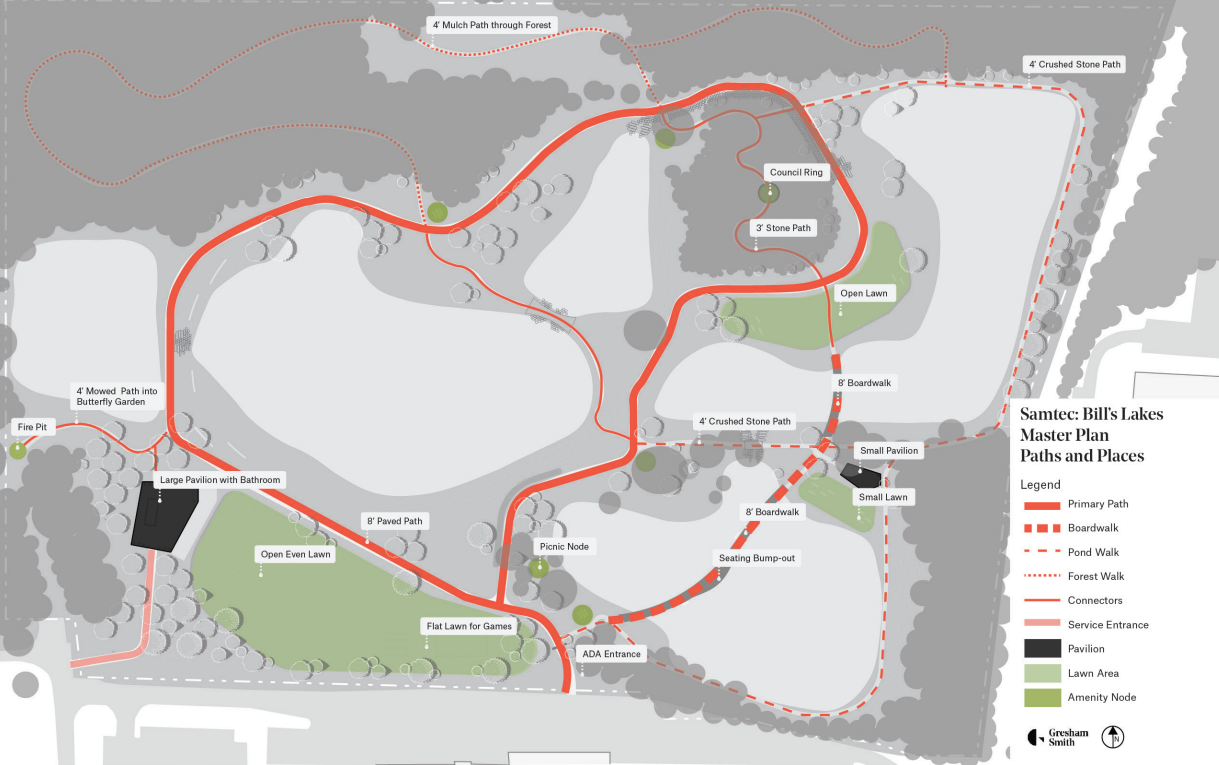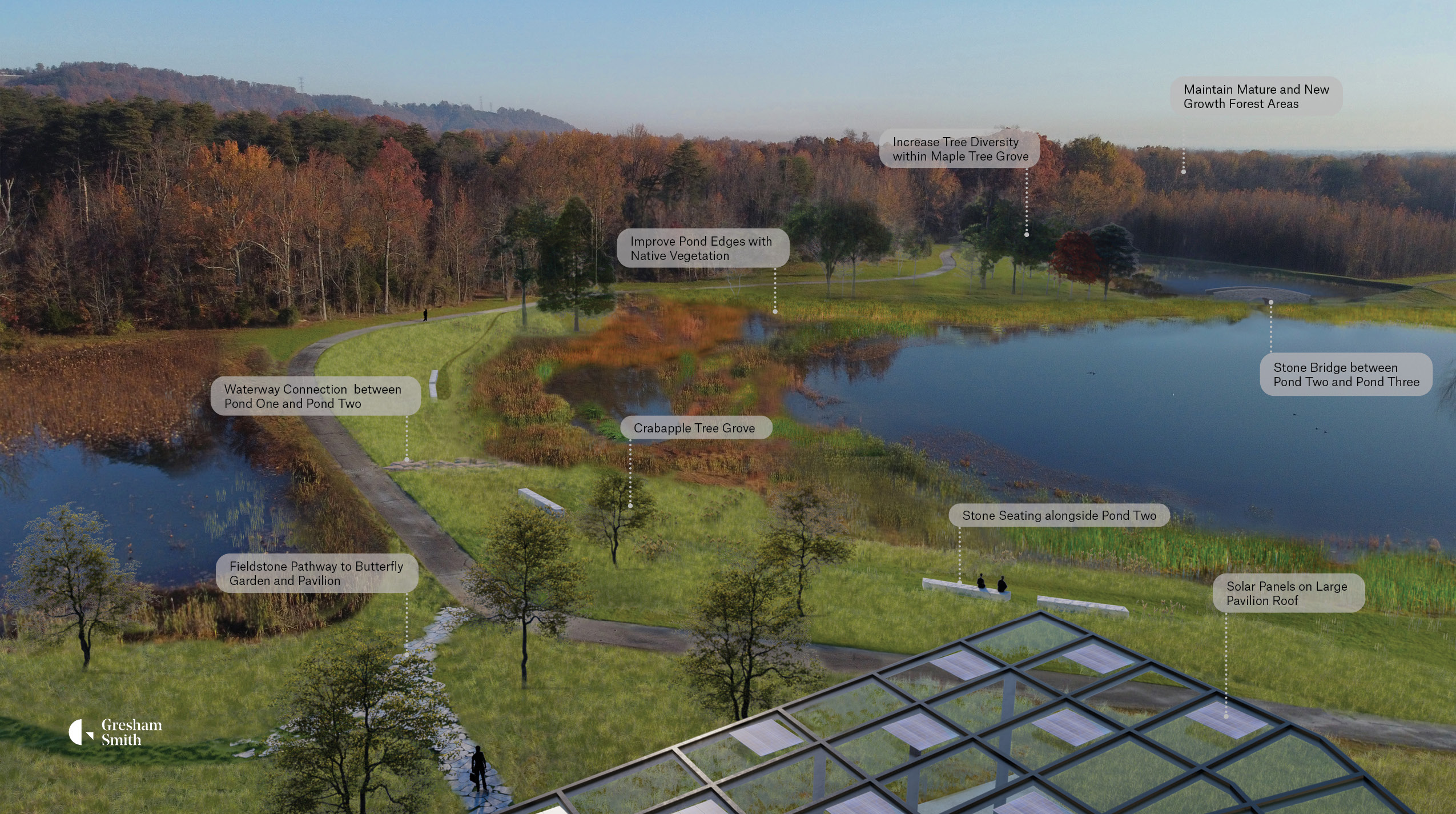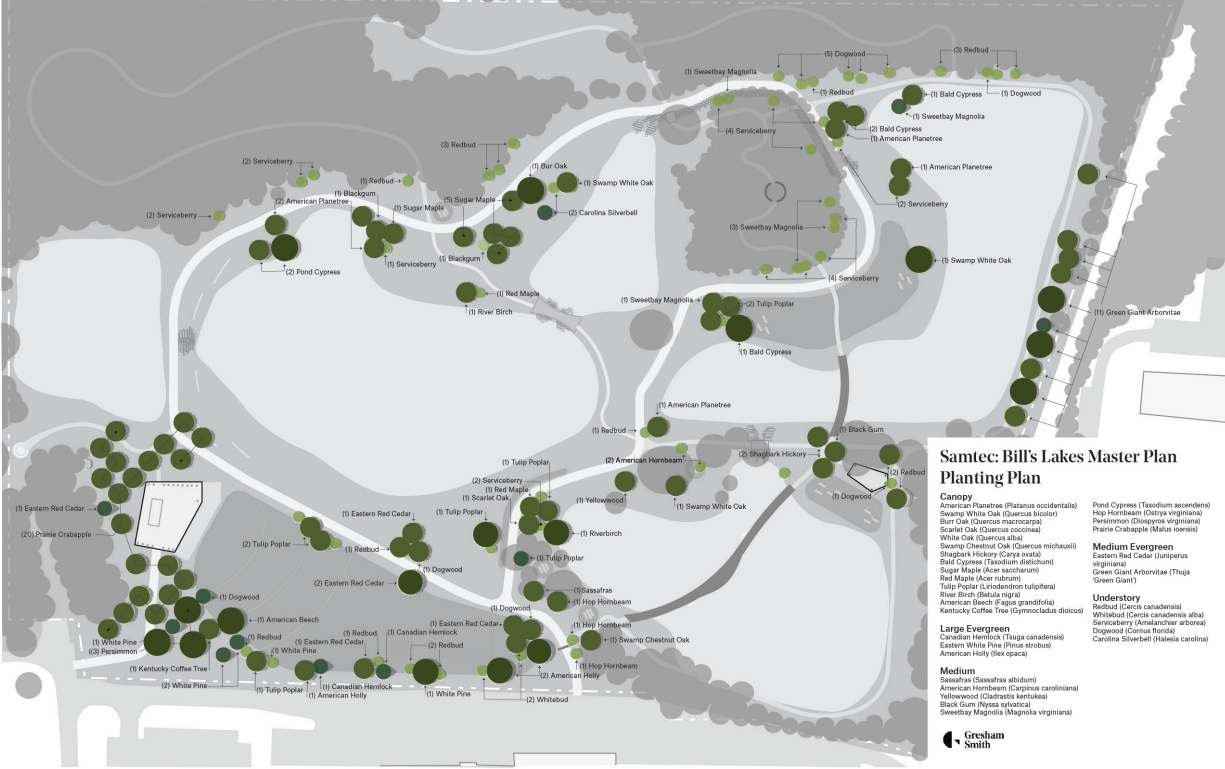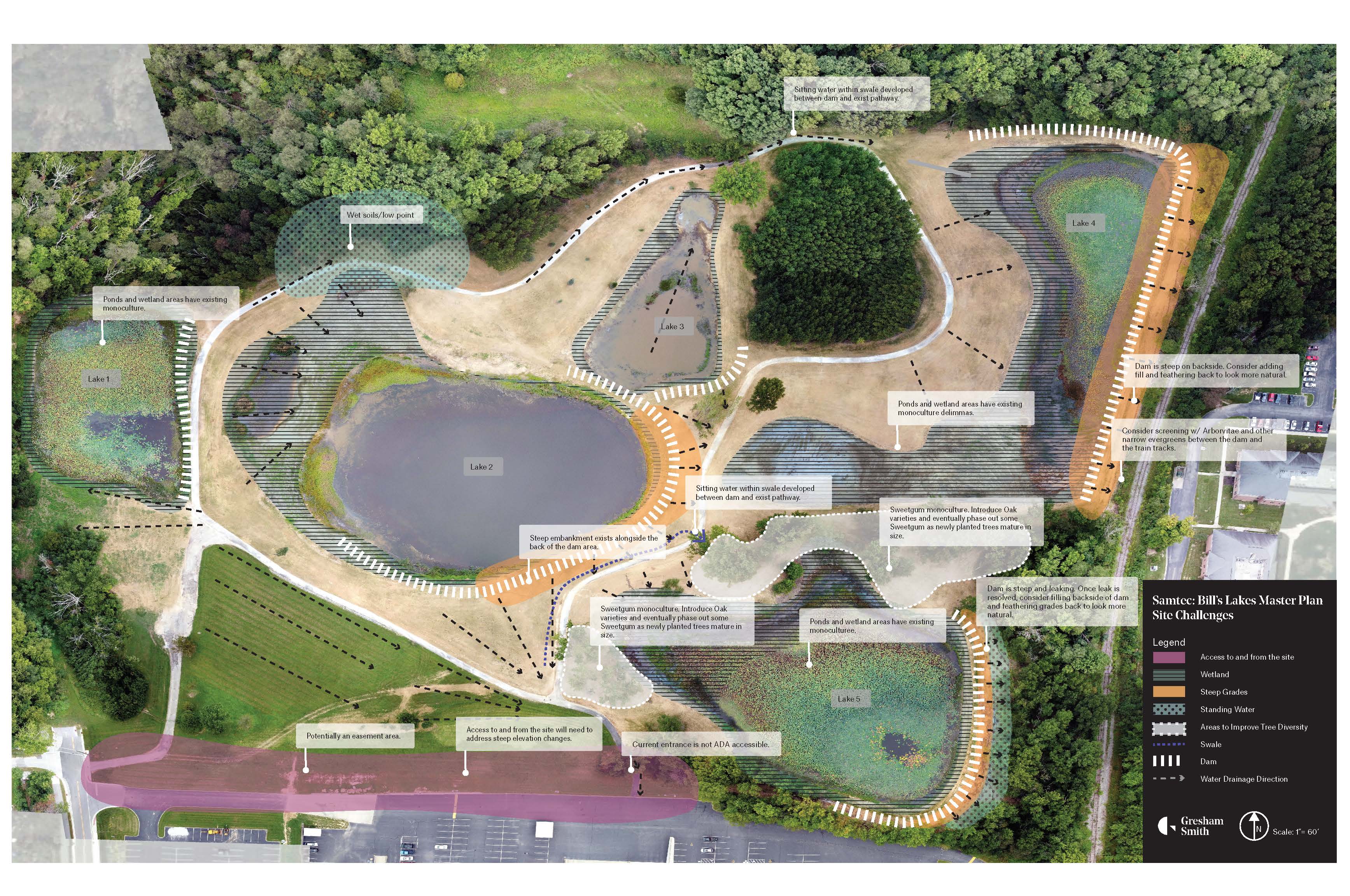Headquartered in New Albany, Indiana, Samtec is a cable manufacturing company with strong environmental commitments. When they sought to transform the land behind their industrial site into a multi-use space that could serve their clients and employees and double as a bioretention area, they called on Gresham Smith to develop a master plan.
Creating the master plan was no easy task. We had to plan for invasive plant species and five existing ponds, incorporate modern amenities to create an amenity space for Samtec employees and improve the overall environmental and ecological function of the site. Over the course of three months, our Landscape Architecture team worked to imagine how the company could take full advantage of their site while maintaining their commitment to the environment.
acres
mile walking loop
month planning process





